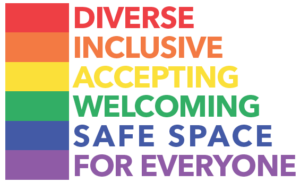Employee Health and Job Burnout
Work can be a source of pride and excitement, a social network for meeting new people and engaging in like-minded conversations with colleagues. When an employees’ workload is maxed out, it can cause mental health challenges and if employees do not balance work and life effectively, they may become disengaged and less productive. Let’s talk about the importance of employee health and how little or no health maintenance in the workplace can cause job burnout.
What is Burnout?
Job burnout is a type of work-related stress causing physical or emotional exhaustion that also involves a sense of reduced accomplishment and a loss of personal identity. Some experts believe the term “burnout” could be caused by depression, however researchers suggest that personality traits and family life may also influence who develops job burnout. According to an Indeed.com study, 52% of people report feelings of burnout from work which is up from 42% before the pandemic began. Expecting to power through like nothing else is going on isn’t realistic; of course it has been hard in recent years due to the pandemic, but, did you know that nearly half of working adults were already feeling burned out before COVID began? Whatever the cause, job burnout can affect your physical and mental health. Being able to identify the symptoms is the key and then, seek help.
Symptoms
- Finding it difficult to concentrate.
- Lack of energy and productivity.
- Being critical or cynical at work.
- Change in sleep habits.
- Loss of satisfaction from work accomplishments.
- Being impatient with coworkers, customers, or patients.
- Using drugs or alcohol to feel better.
- Unexplained headaches.
- Stomach or bowel problems.
Causes
Employee burnout is always around. It can come and go. But what everyone experienced during 2020 with the COVID-19 pandemic shifted employee stress and burnout to a whole new level. When the pandemic first began, the initial stress of the virus, loss of a loved one, possibility of a loosing your job, and a major shift to virtual working environments began to wear on people and the unknow factors of how long things would last, made it harder to manage.
With the causes of burnout listed below, it is easy to see how the COVID-19 pandemic enhanced these issues. But that isn’t the sole reason burnout may occur. Various other factors can contribute and increase the level in which you may experience burnout such as:
- Work-life imbalance. If your job takes up too much of your time and effort and you don’t have energy to spend with your family and friends, you might burn out quickly.
- Lack of control. If you are not part of the team and your voice and ideas are not heard, this affects your ability to participate and therefore you may reduce your productivity. Being micromanaged in areas related to your schedule, assignments or workload — could lead to job burnout. So could a lack of necessary resources you need to do your work. If you do not have adequate tools to effectively complete daily tasks, you are less likely to engage and may experience work-related stress.
- Unclear job expectations. If you’re unclear about your role and job duties or what your supervisor or others expect from you, you’re not likely to feel comfortable at work. This can affect your overall job performance.
- Dysfunctional workplace dynamics. If your boss micromanages you or you feel intimidated by leadership, this can contribute to job stress. Being undermined can also affect the way in which you work, possibly leaving you confused or less confident in completing daily tasks, unsure of whether you are doing your job ‘right’ or not.
- Extremes of activity. Monotony in the workplace where you just plug away at your desk doing the same thing over and over can lead to fatigue in the workplace. Over time, this can create job burnout and in some cases, depression. If your environment is chaotic and ever-changing where you need a constant burst of energy just to remain focused — it can lead to fatigue and job burnout.
- Lack of social support. If you find yourself feeling isolated at work or in your personal life, you might feel more stressed. After a period of time, this could impact your productivity and lead to burnout.
Additional risk-factors such as working long hours, experiencing a consistent heavy workload with little control or ability to ask for help can not only cause job burnout, but it can affect job performance and decrease productivity. Unaddressed job burnout can cause:
- Fatigue, sadness, or anger.
- Excessive stress which can lead to health-related issues such as: vulnerability to illness like heart disease, type 2 diabetes and depression.
- Alcohol or substance misuse.
How to take action
The first step is to evaluate your situation and make a list of what it is that needs to be changed in order to decrease job burnout. Schedule some time with your supervisor to review your list and work together to change expectations or reach compromises that clarify your role and priorities so that you are successful and confidient in your position. Next, seek support from co-workers, friends or loved ones. Sometimes talking about your work environment helps to flush out areas of concern that you may not even know existed but that were causing work-related stress and burnout. Lastly, focus on you, outside of the workplace by trying some of the following tips to help reduce stress:
- Exercise. Try signing up for a yoga or tai chi class. The goal is to increase your level of movement by spending at least 30 minutes per day taking part in some sort of physical activity that allows your mind and body to focus on your well-being.
- Mindfulness. Focus on your breath flow and be aware of what you’re sensing and feeling without interpretation or judgment. At work you may try to face situations with openness and patience, and try not to judge.
- Sleep. Develop a routine where you are getting up and going to bed as close to the same times each day. Create a space that is inviting in your bedroom so that when it is time to sleep, your body and mind can easily relax. Try not to use electronic devices before bed, instead read a calming and mindful book or spend a few minutes stretching and practice deep breathing.
- Diet. According to the Sleep Foundation, most experts recommend eating two to four hours before bedtime. The body takes quite a bit of time to properly digest a meal. People who eat well ahead of bedtime have a better chance of digesting their food which can reduce their risk of poor sleep. Foods to avoid before sleep include:
- Spicy foods
- Foods high in fat
- Acidic foods
- Caffeinated beverages
- Alcohol
If you are currently struggling in the workplace and believe you are experiencing job burnout, talk to a doctor or a mental health provider about your health. Contact NOAH and schedule an appointment at 480-882-4545 or request an appointment today.










